Pull-up straps are used as training equipment primarily to make it easier for beginners and returners to perform pull-ups. But wait: There are also other applications! For example, they can be used to increase resistance during pull-ups and other exercises , making them ideal for professionals. Whether you're just starting out in your workout or you're already well juiced, pull-up straps increase your options!
The benefits of pull-up straps are many. At-home deadlift training benefits anyway; it's enriched with a variety of new exercise options, and chin-up straps allow you very precise load control. Even calisthenics athletes who feel at home on their equipment and are basically dependent on little equipment for training can approach new exercises more easily with the help of the pull-up straps and optimize the efficiency of the training. Crossfit and gymnastics enthusiasts rely on straps anyway, so why not choose the most durable and long-lasting pull-up straps?
What is a pull-up band and who is it suitable for?
First things first: A pull-up band is something different from a gymnastic or terra band. At first glance, it may look similar, but compared to gymnastics and terra bands, the pull-up band has a much higher strength. We'll take a closer look at how strong or thick the band is in a moment.
The strength makes it possible for you to use the band for demanding purposes. An example of an area of application for training beginners is the eponymous use on the pull-up bar:
- Here you hang the band on the pull-up bar and place your feet in the band.
- The resistance of the band pulls you up, which makes it easier for you to perform the pull-ups.
- Depending on how much strength you have and how difficult the pull-ups are for you, you can use stronger or weaker resistances of the pull-up bands as a beginner and lower the resistances every few weeks to eventually do pull-ups completely on your own.
Professionals can use pull-up bands to increase resistance. While the exercise is not very common, a pull-up band can be placed around the shoulders and attached to a solid object on the floor. Those who now do pull-ups must pull themselves up against the resistance pulling down - an additional intensification of the difficulty level. Also, professionals can use the pull-up strap just like beginners, in order to manage more pull-ups than usual and to train strength endurance due to the higher number of repetitions.
As we said, whether you are a beginner or a professional, pull-up bands are suitable for a wide range of applications. Now, if we expand the horizon beyond just naming the band, it becomes clear that the pull-up band can also be used to help with dips and as a resistance band for individual exercises. Biceps curls with pull-up bands, triceps extensions, rowing exercises - all this and much more can be done without any problems, as long as you attach the pull-up bands to a solid body.
In all this, pull-up bands have the great advantage of greater durability compared to other resistance bands and even more so compared to gymnastic and terra bands. Due to the enormous strength or thickness of pull-up bands, they last for quite a long time. Apart from the fact that you can perform your workout safer and smoother due to the robust workmanship, your wallet will be happy because you don't have to buy new bands after 1-2 months - a scenario that unfortunately happens all too often with less strong bands...
Looking for a good pull-up band? The important criteria at a glance
- Material
- Strength/s
- Scope of delivery
Pullup & Dip has several sets of pull-up straps in its assortment, which convince in the criteria mentioned and explained in more detail in a moment. The pull-up bands for pull-ups in different strengths with bag are made of the ultra-strong and durable natural rubber, available in numerous strengths and include several extras in the scope of delivery. Find out more about the criteria in the next lines or click through to the selection of our sets right here!
Looking for pull-up straps? Click here!
[product="P-00095"]
#1 Material
In order for pull-up bands to provide the desired benefits and be reliable as well as durable, they need to have a sturdy finish. From this point of view, it is advantageous to manufacture them from natural rubber or natural latex. The best pull-up straps are made of this material and thus stand out from the cheaper products made of synthetic rubber. Chin-up straps made of synthetic rubber are more resistant to UV radiation, but they are still as tear-resistant and stretchy as those made of natural latex and natural rubber. Pull-up straps made of multiple layers of natural latex and natural rubber have a special quality.
#2 Strength/s
The next step is to find the right strength of the band. At this point, it should be clear that a single band has only a certain strength and buying it is recommended solely if you are already close to being able to do pull-ups without support. Then you use the lightest band to achieve the necessary strength level for independent pull-ups.
Generally, it's best to purchase a set of pull-up straps. As an advanced user, you will then be able to use the pull-up straps for a variety of exercises on and off the pull-up bar and adjust the strength of the strap to the difficulty of the exercise - for example, Butterfly Reverse with pull-up straps is an inherently heavy exercise where even very trained individuals train with lighter weights, while rowing naturally develops a higher strength potential and thus you are able to train cleanly with stronger resistances.
Beginners benefit from pull-up band sets anyway, starting with the highest strength levels to practice pull-ups more easily. As strength increases, resistances are increased step by step with each band until eventually it's time to be able to perform pull-ups completely by yourself.
The following chart will help you to get a first orientation which of the pull-up bands you should use as support for pull-ups:
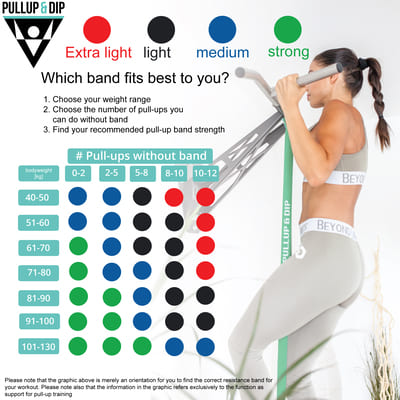
If you also use pull-up straps for other exercises, for your warm-up and for other purposes, you will determine the required strength of the strap simply by trying it out. At the end of the day, there is a use for every band at every level of training, as long as you train your whole body in a balanced way and with alternating exercises.
#3 What comes with the set
Some sets come with useful extras. Apart from a bag to carry all the bands in (and perhaps to protect them from UV radiation, which is unfavorable for natural rubber?), a door anchor is a very practical extra.
The door anchor gives you the option to fix the pull-up bands in the door to perform a range of exercises, such as triceps stretches, rowing, lat pull and many more.
With the aforementioned Pull-up straps set from our house at Pullup & Dip, you will also receive a free ebook that you can conveniently download via email after ordering the bands. This ebook contains a series of exercises that can be performed with the pull-up bands. Gone is the tedious googling of exercises, instead everything is explained in an easy to understand way and illustrated in the Ebook!
For beginners and returners: First steps on the pull-up bar
For beginners and those returning to training, we explain how pull-ups can be practiced from the ground up. The best way to get started on independent pull-ups is with the help of pull-up straps. You start with the strongest pull-up band and use it as a support:
- You make a loop in the middle of your pull-up bar with the pull-up band. Alternatively, if your pull-up bar has parallel handles, hang the pull-up band from the parallel handles.
- Next, grasp the pull-up bar and hold on to it while hanging. While holding onto the handles, place your feet into the band. You'll notice that the resistance of the band helps pull you up.
- While performing the exercise, move up in a controlled manner (Not with momentum!) for 1-2 seconds until your chin is level with the pull-up bar. Keep your head relaxed.
- Lower yourself back to your starting position in a controlled manner (again, not with momentum!), whereby the downward movement should always take a little longer than the upward movement. When you have reached the lowest point, pull yourself up again.
- Repeat this process for 3-5 sets of 8-12 repetitions each. Be careful never to drop down abruptly and keep tension throughout the exercise. This will protect your joints and prevent muscle strain.
If you can perform the exercise cleanly for the targeted amount of sets and repetitions, you have mastered the difficulty level and can increase the difficulty by using a band with less resistance. Continue in this manner until you have flawlessly mastered several pull-ups without the aid of the band.
Once you can do free pull-ups, you can increase the difficulty by attaching the band to the floor and to your shoulders to pull yourself up against additional resistance. In this case, the pull-ups are even more difficult, although this application of pull-up bands is atypical. Usually, to increase the difficulty, backpacks are filled and repositioned or new pull-up variations (e.g., wide grip, single-arm pull-ups) are performed.
For advanced users, beginners and returners: alternative further exercises with pull-up straps and trained muscle groups.
Besides the application for pull-ups, there are other possible uses for pull-up straps. Here we would like to present 4 exercises and give instructions. This will give you an idea of how versatile the pull-up straps really are. The exercises make pull-up straps an absolutely advantageous training equipment for advanced users as well as beginners and those returning to training. Please note that these pull-up band exercises are only a very small selection and dozens of exercises are possible in total.
Rowing for back muscles and biceps
- Attach the pull-up band to the door anchor or another solid body. It is advantageous if the pull-up band is attached at hip level.
- Squat down slightly, keeping your back and upper body straight.
- Grasp the chin-up strap with one hand and pull it toward you until your elbow is just behind your torso, bringing your arm close to your torso.
- Move to the starting position, but not completely. Keep the tension permanently. Now pull the pull-up band back toward you.
- Perform the pull-up exercise first with one arm several times and then with the other arm.
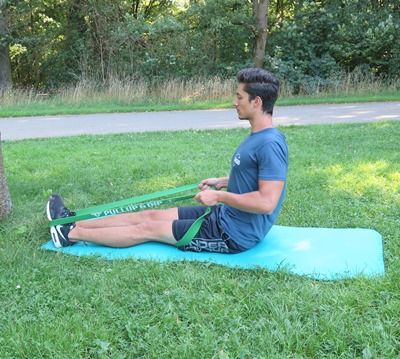
[product="P-00095"]
Chest press for pectoral muscles and triceps
- Attach the chin-up strap to a fixed object at chest level using a loop.
- Then stand in the band surrounding you with your back to the loop. Now grasp the chin-up strap with both hands in an overhand grip.
- For a stable stance, place one leg forward and the other further back. The upper body remains straight.
- Now, with wrists straight, push the band forward evenly with both hands until your elbows are slightly bent and arms are almost fully extended.
- Then move back and repeat the sequence several times, making controlled and non-explosive movements.

Dips for triceps and chest muscles
- Dips are performed on two parallel handles facing you, ideally at hip level. Our pull-up bar is suitable for this purpose.
- You attach the pull-up strap between the handles, place yourself between the handles and grasp them.
- Then lift your feet off the floor, use the strength of your arms to hold yourself above the floor by the handles and rest your knees on the band.
- The band will help you push up from the handles using the strength of your triceps muscles. Keep your arms close to your body.
- In the top position, your arms should not be fully extended, but your elbows should be slightly bent.
- You lower yourself to the starting position, which should be no deeper than your elbows being at an angle of just over 90 degrees.
- Repeat the exercise 8-12 times per set and with 3-5 sets.
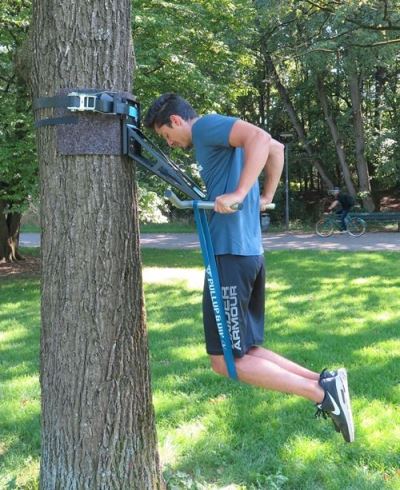
[product="P-00095"]
Biceps Curls
- Stand with your feet hip-width apart on the pull-up band.
- Now grasp the top loose end of the pull-up band in an underhand grip with both hands.
- Keep the band close to your body and your upper arms completely against your torso.
- Now pull the pull-up band upward with both hands, but keep your upper arms in the unchanged position parallel to your torso and against your torso; thus, you are moving your forearms alone. Make sure your wrists are straight.
- Repeat the exercise several times. For a small muscle group like biceps, 8-12 repetitions in 3 sets should be enough.
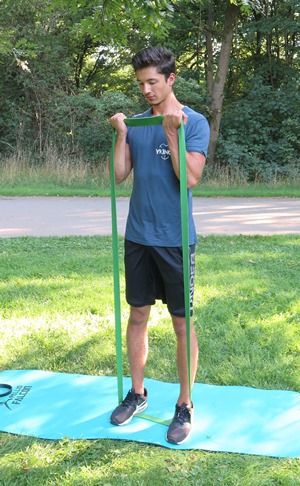
Conclusion
For beginners, returners to training and professionals from a wide variety of sports, pull-up straps come in handy. From yoga and gymnastics to home gym, Crossfit, and calisthenics, the uses and benefits of the very sturdy, durable, and versatile pull-up band sets range pretty widely.
At the end of the day, though, it's the sets, not individual bands, that we recommend: A single band means only one strength - that might be enough if you want to take the final steps to be able to do pull-ups on your own. If you want to use the pull-up bands in the long term, to the full extent and with maximum variety, it's best to choose one of our sets - including bag, door anchor (note: not included in all sets) and free ebook with 30 exercise instructions!
Are you looking for the right Calisthenics accessories to complement your Calisthenics training?
We at Pullup & Dip offer you high-quality calisthenics equipment for indoor & outdoor.

Other recommended articles:
Leg training with bands- Top 10 leg exercises with FREESIXD
The big fitness band comparison - all types and advantages and disadvantages of different bands
The top 10 exercises with resistance bands (expander bands)
The biggest five mistakes with pull-ups - and how to avoid them!

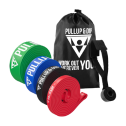
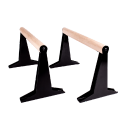
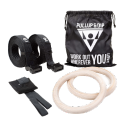


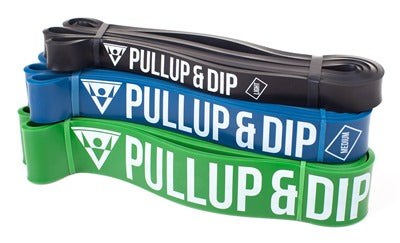
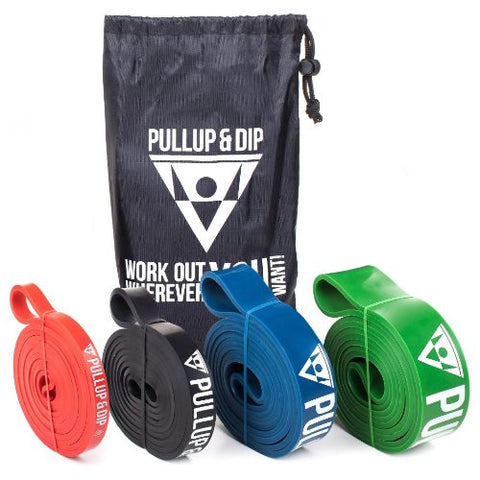
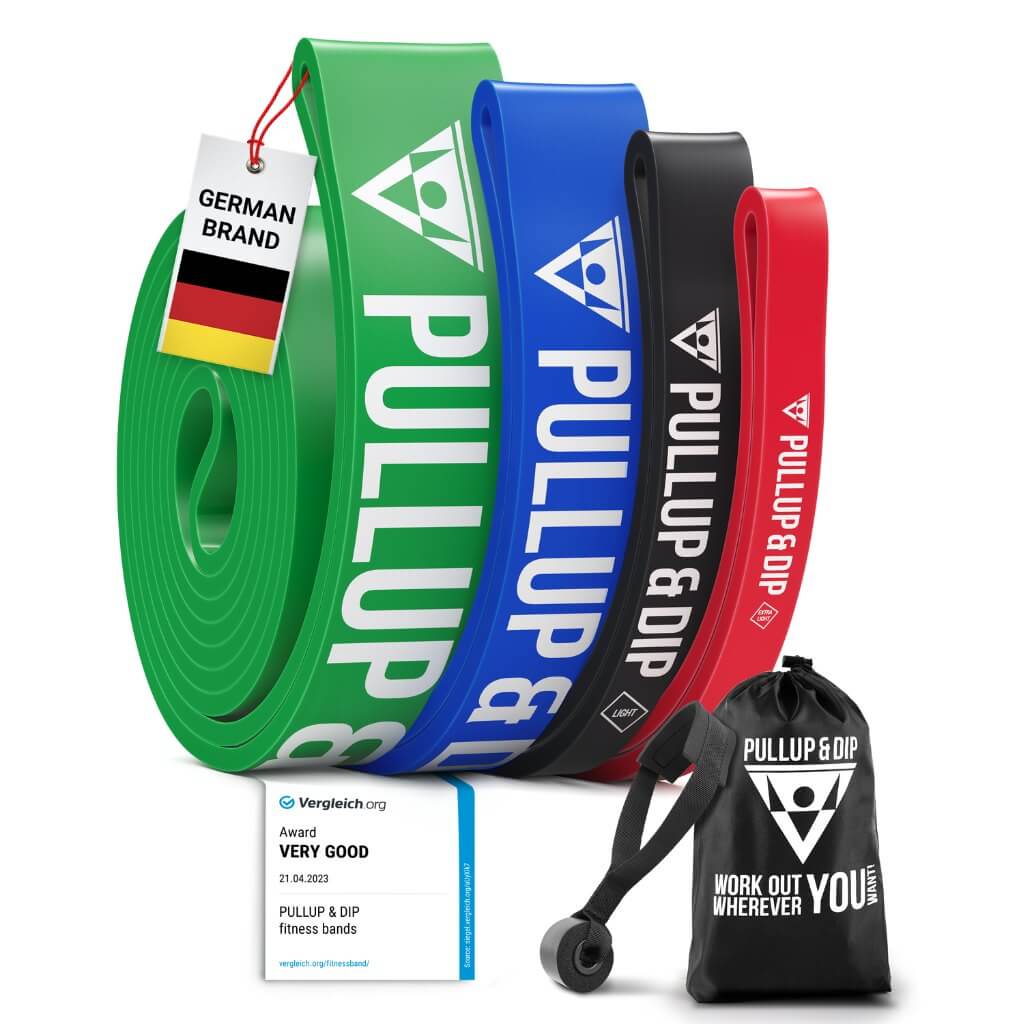
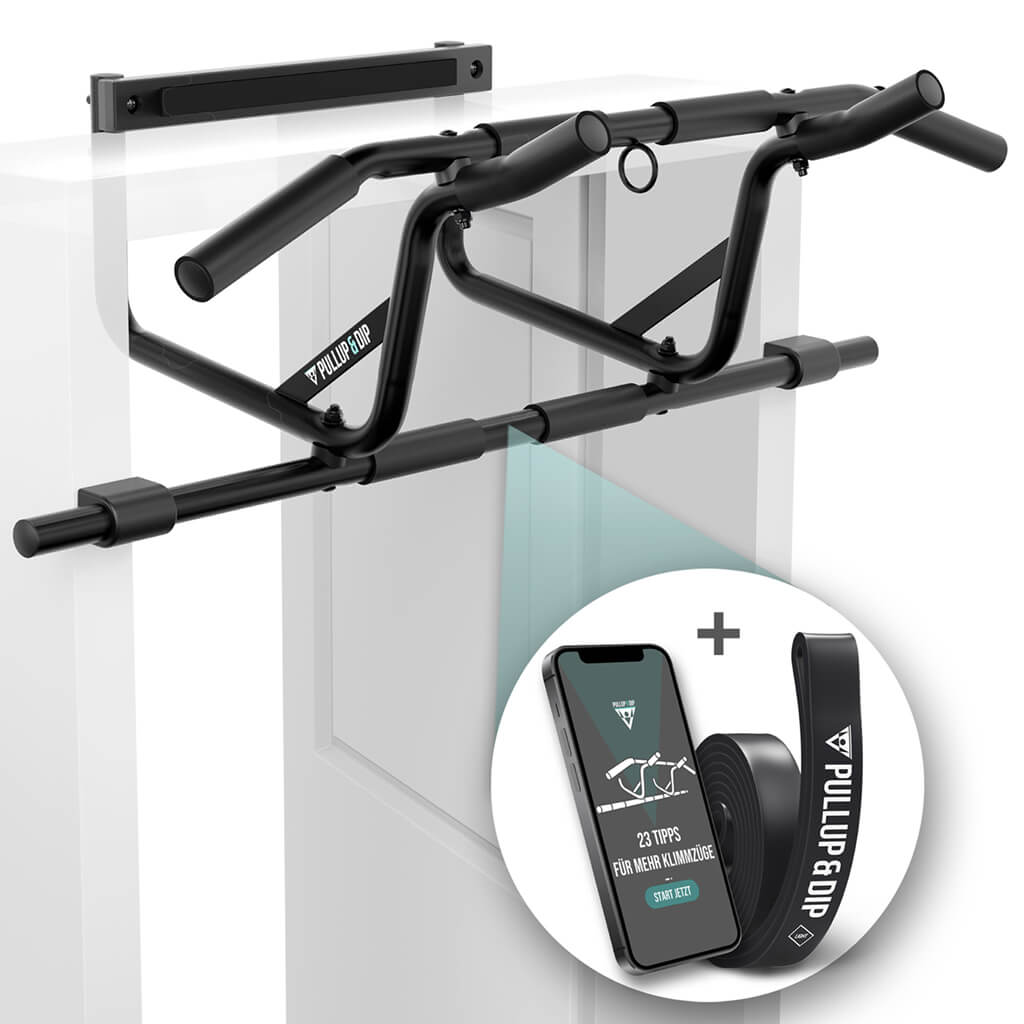
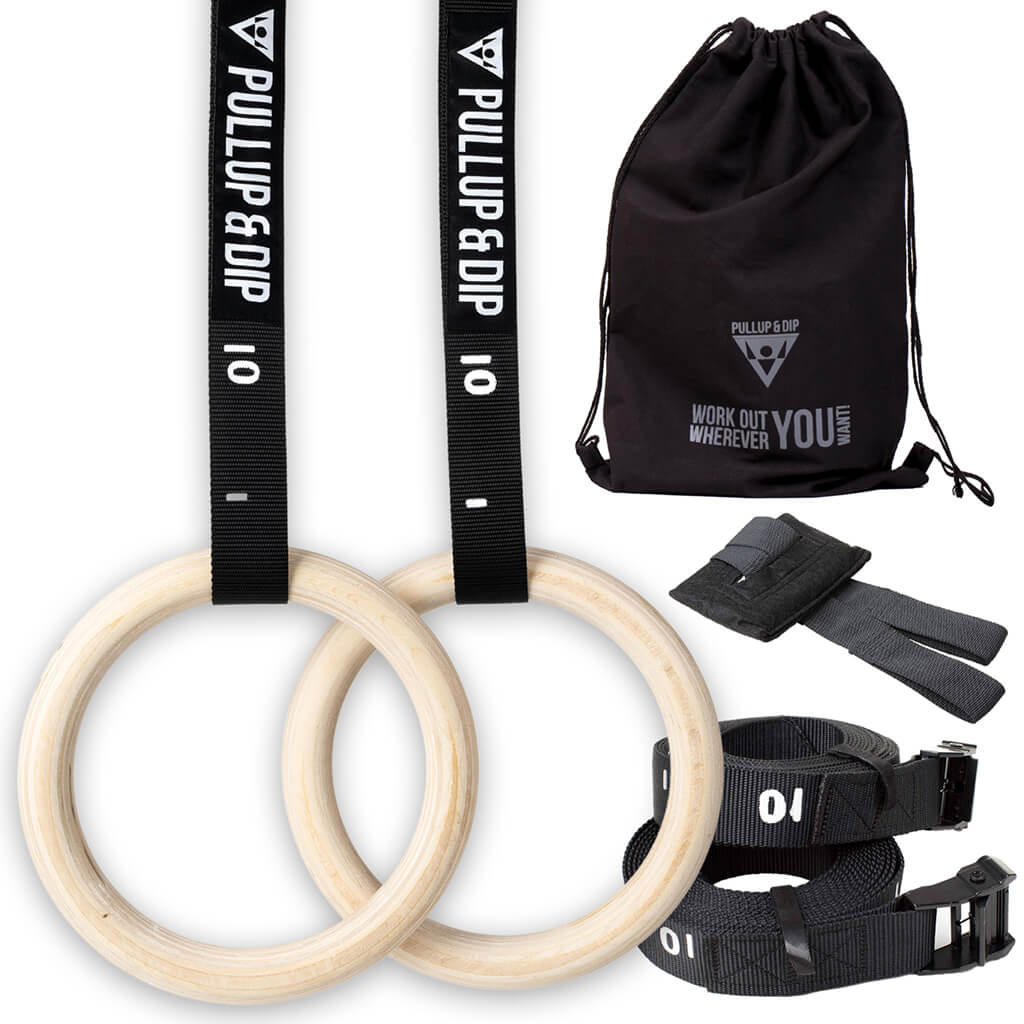
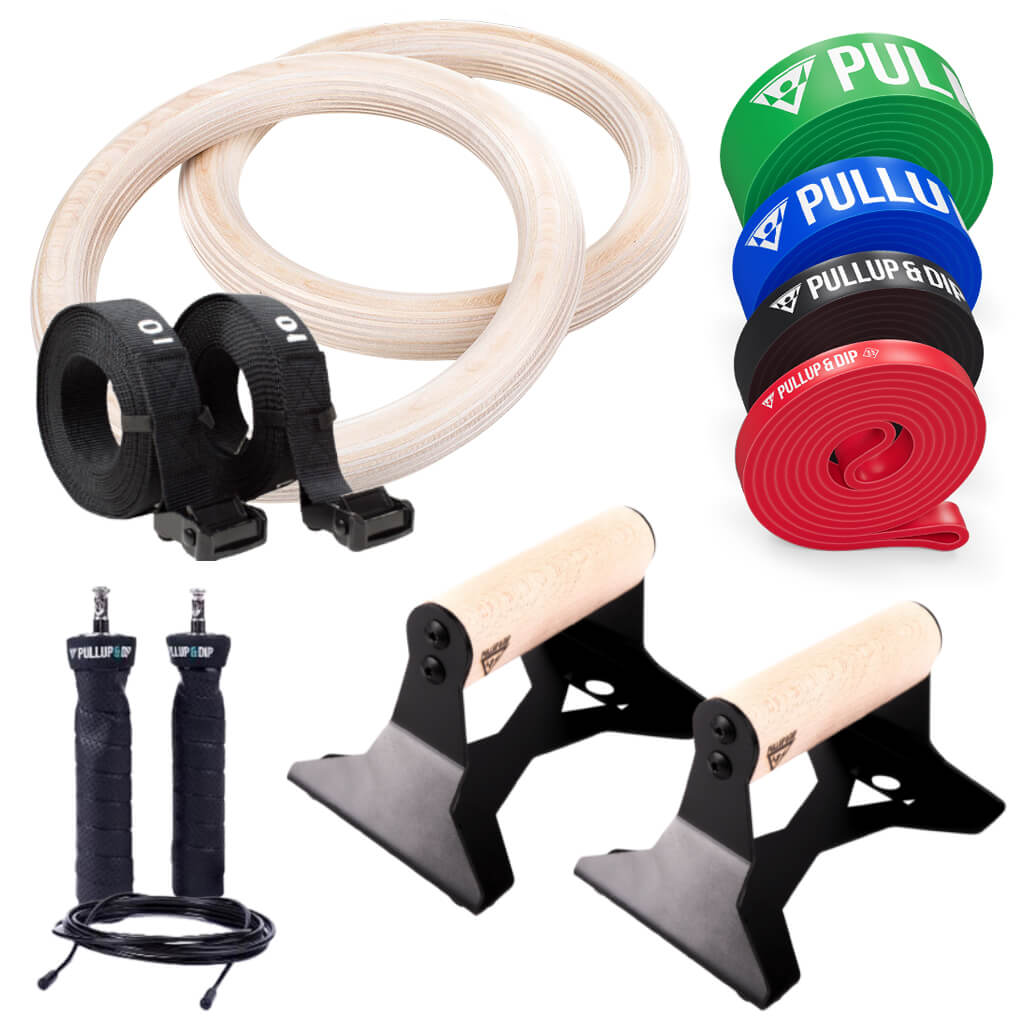
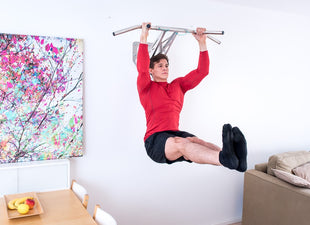
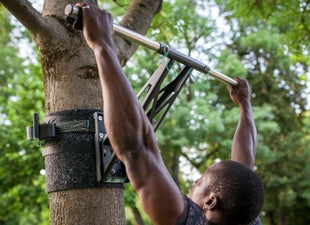
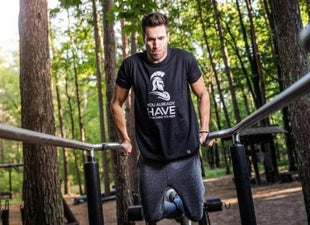
Leave a comment
All comments are moderated before being published.
This site is protected by hCaptcha and the hCaptcha Privacy Policy and Terms of Service apply.